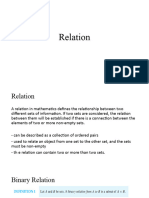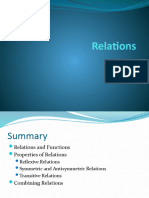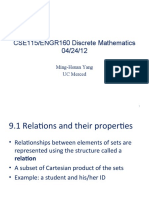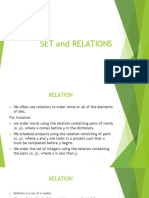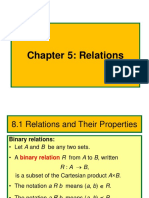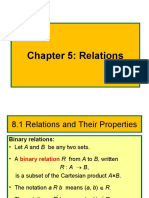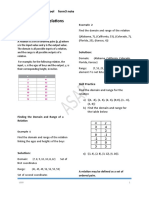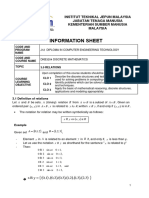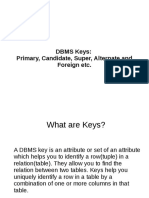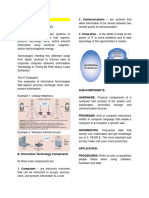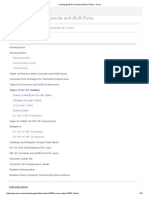0% found this document useful (0 votes)
12 views16 pagesLecture 5
Chapter 5 discusses relations in discrete mathematics, defining them as fundamental structures that connect elements of sets. It covers various types of relations, including binary relations, equivalence relations, and partial orders, and highlights their applications in computer science and advanced mathematical topics. The chapter also explores properties of relations, such as reflexivity, symmetry, and antisymmetry, providing examples and definitions to illustrate these concepts.
Uploaded by
ibrahemashhabCopyright
© © All Rights Reserved
We take content rights seriously. If you suspect this is your content, claim it here.
Available Formats
Download as PDF, TXT or read online on Scribd
0% found this document useful (0 votes)
12 views16 pagesLecture 5
Chapter 5 discusses relations in discrete mathematics, defining them as fundamental structures that connect elements of sets. It covers various types of relations, including binary relations, equivalence relations, and partial orders, and highlights their applications in computer science and advanced mathematical topics. The chapter also explores properties of relations, such as reflexivity, symmetry, and antisymmetry, providing examples and definitions to illustrate these concepts.
Uploaded by
ibrahemashhabCopyright
© © All Rights Reserved
We take content rights seriously. If you suspect this is your content, claim it here.
Available Formats
Download as PDF, TXT or read online on Scribd
/ 16






















